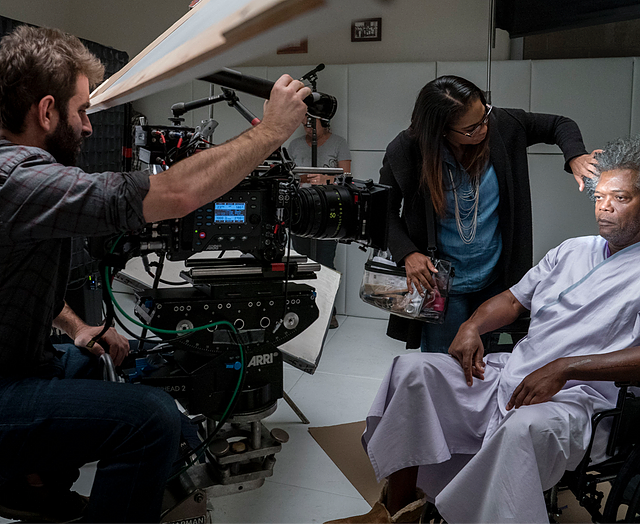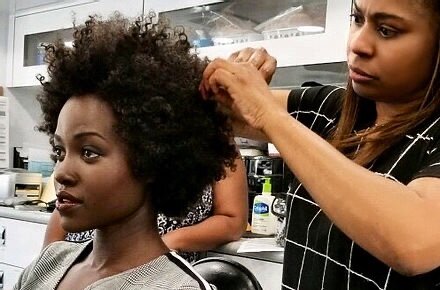For many hairstylists, working with celebrities is the pinnacle of being a professional hairstylist. From backstage at the runways of Fashion Week, to behind the scenes on TV and movie sets, this work can be the ultimate in exposure, with your work seen by millions of eyes around the world. But it’s no cakewalk getting to the decision-makers who hire hair stylists for these jobs, and it can often be more difficult for stylists who specialize in textured hair.
For decades we’ve heard horror stories from models and actresses of color who have shown up on set only to find a hairstylist that doesn’t know the first thing about textured hair. According to a 2019 survey conducted at all 4 major Fashion Weeks by Models of Color Matter, 66% of the models of color interviewed have experienced poor treatment of their textured hair backstage and on-set.
Longtime hairstylist Diane DaCosta has initiated a petition to be presented to the New York State Board of Cosmetology and New York State Office of the Professions - State Education Department. The petition aims to make a working knowledge of cutting, coloring, and styling textured hair a requirement to receive a cosmetology license in New York state. The goal is to ensure that all new stylists entering the workforce can provide general services for textured hair.
This is certainly a more than worthy cause, but one that will take time to be enacted across all states. It leaves one to wonder what can be done for talent of color in the meantime. Well, for stylists who are already experts at styling textured hair or are actively seeking further textured education, this is a clear sign that your presence is desperately needed in these spaces. So how can you make the move from salon to set?
Celebrity hairstylist, Texpert Collective Co-Founder, and Mizani Global Artistic Director Tippi Shorter advises hairstylists to have a strong portfolio and a great ‘chair-side manner’ when breaking into on-set work. A strong and wide range of skill sets is also important. Emmy nominated and veteran film hairstylist Camille Friend, who is currently working on Black Panther 2, shares that it’s important to be a well-rounded stylist who knows how to style, cut, blow-dry, and color all hair textures, and be skilled at wig design as well. Shorter also agrees that wigs and extensions are essential to know, and also stresses the importance of understanding ALL textures because you’ll never know what you’ll be asked to do.
Once you do make it on set, it’s important to know how to conduct yourself in these spaces. “The best advice someone gave me early on in my career is “actors are not your friends”. It is important to remain professional at all times. Even if you are in a social setting with an actor, remain professional. I have seen people get fired at the “kick-off party” for bad behavior,`` says Friend. Shorter adds that “Clients want to know that they can trust you to deliver great hair in any situation. Also, this is usually their time to prepare for their work, so reading the room and respecting their space even while working on their hair is important.”
These environments are also different and don’t operate like hair salons. Shorter advises stylists to be prepared for the fast turnaround in styling. “It’s not like the salon. You may have an hour to prep and that has to be shared with hair, makeup and wardrobe.”. Friend shared the same sentiment and offered these tips:
Work quickly. You are on set, not in the salon. Time is money, work efficiently to create the hairstyle.
Be on time. Being on time on a film set means showing up at least 15 mins early.
There can be many instructions when you start working on a set. Following instructions or directions is very important. Do what is asked of you.
If you don't understand the task, please ask questions.
Our experts also mentioned the importance of the hairstylist union, as well as the difficulty it can take to gain access. “Accessibility to the union is key. You have to have hours to get into the union, but you can’t work jobs until you are in the union. Like a catch 22. I think making the union process easier and accessible is key. Many stylists don’t know how to go about applying, so a Key stylist offering that type of class would be great.” says Shorter. Friend believes that “the unions are opening their doors to more African American and Latin hairstylists and barbers.”, so we may be on the brink of change in this regard.
Despite the systems the industry may be operating under, we see that hairstylists of color are still making major headway. As our experts suggest, continue furthering your education (and sign up for our newsletter!) and mastering your skills, so when your time backstage comes, you’ll be ready.
Follow our contributors: Camille Friend and Tippi Shorter Rank to learn about upcoming classes.
written by Amber A McKinnon


